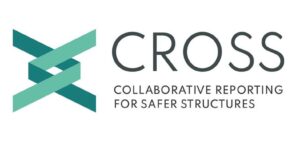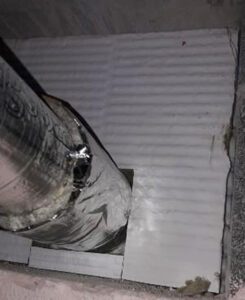In a year when FIREX International opens (May 17 2022) on the fourth anniversary of the publication of Dame Judith Hackitt’s Independent Review of Building Regulations and Fire Safety, it is timely to review the greater scope for prioritising building safety she recommends to dutyholders, and the wider issues surrounding the creation of the ‘Golden Thread’ of key fire risk information.

Neil Gibbins, Lead Fire Safety Consultant for CROSS-UK
Here, Hunter Seymour speaks to Neil Gibbins, Lead Fire Safety Consultant for CROSS-UK (Collaborative Reporting for Safer Structures UK), to find out how the group is working to provide a safe space for those who want to report safety critical information they find, to prevent future failures.
In short, CROSS-UK provides a system of confidential ‘incident reporting’ to improve the knowledge pool and encourage the virtuous circle of learning that the Hackitt Report endorses as a scheme to achieve enhanced levels of data quality – ensuring the right people have the right information at the right time. Let’s hear from Neil though, who can explain exactly what it does and what fire safety professionals need to know.
IFSEC Global (IG): Can you give us a brief overview of the origination of CROSS-UK and the early initiatives?
Neil Gibbins (NG): CROSS has been in operation for over 15 years, but, until recently, was focused on structural safety issues. Created by a group known as SCOSS (the Standing Committee on Structural Safety), the leading thinkers from IStructE (Institution of Structural Engineers) and ICE (Institution of Civil Engineers) recognised that there could be great benefits achieved by organising a route for people to share learning in a safe, independent, non-judgmental process.
CROSS has recently been relaunched with a new website and scope. Collaborative Reporting for Safer Structures is the full name, reflecting the wider remit that now includes fire safety. Significant investment by the MHCLG (Ministry of Housing, Communities & Local Government) – now Department for Levelling Up, Housing and Communities – Building Safety Programme team has facilitated a complete refresh of the website and engagement with the fire sector; the impetus for this being the Grenfell Tower fire and the subsequent analyses of our building safety system.
IG: What are the main aims and objectives of CROSS-UK today?
NG: CROSS has a number of functions. It provides a route for a conscientious professional to tell others about an issue they are concerned about, or to share something they have learned. The information they give can be analysed by an expert panel that holds knowledge sufficient to identify the importance of the information and what lessons need to be learned. The same panel sit back and look at the system and interpret how it is working and what needs to be done to keep it being effective.
 IG: What is the value of CROSS-UK as an information exchange and who can benefit? And, how do you ensure reports are kept anonymous and lessons are shared?
IG: What is the value of CROSS-UK as an information exchange and who can benefit? And, how do you ensure reports are kept anonymous and lessons are shared?
NG: CROSS applies a process devised by NASA for the US aviation sector. Reports are received by “Designated Persons” – the only people who know the identity of the reporter and or the building involved. The report is de-identified and shared with an expert panel. A CROSS report is then developed that sets out the issue that has been reported and the lessons to be learned, signposting associated references as appropriate. The report is then published. Subscribers to the website can choose to receive alerts as and when new reports are posted.
Over 1000 reports have been received, reviewed, and learning points have been published in a quarterly update. Amongst those reports have been nuggets of information that have been read by structural engineers and have added to the knowledge pool for the sector. Structural engineers are now expected to become familiar with CROSS reports and hundreds of them have shared their learning with others.
IG: Can you share cautionary case histories as examples of lessons learned from recent fire safety issues, reports or incidents of particular interest to fire safety professionals?
NG: Reports published relating to fire cover many fields – design, construction and management, products, processes and testing.
Recent reports have highlighted the use of combustible composite material to form access decking to flats and suppliers failing to provide critical safety information with products they put to market.

 IG: What is the value of CROSS-UK as an information exchange and who can benefit? And, how do you ensure reports are kept anonymous and lessons are shared?
IG: What is the value of CROSS-UK as an information exchange and who can benefit? And, how do you ensure reports are kept anonymous and lessons are shared?
